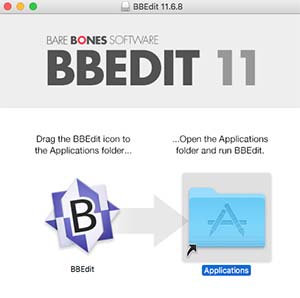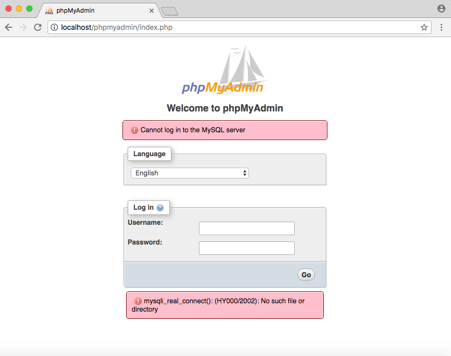

This is already taken care of at the Sites level webroot by following the previous step.

htaccess files used to override the default settings – this can be accomplished by editing the nf file at line 217 and setting the AllowOverride to All and then restart Apache. If you are going to use the document root at /Library/WebServer/Documents it is a good idea to allow any. Then this user level document root will be viewable at: Restart Apache for the new file to be read:
#Mac os x apache mysql php stack code#
Then add the content below swapping in your ‘username’ in the code below:

Launch Terminal, (Applications/Utilities), and follow the commands below, first one gets you to the right spot, 2nd one cracks open the text editor on the command line (swap ‘username‘ with your account’s shortname, if you don’t know your account shortname type ‘whoami’ the Terminal prompt): conf, it’s location and permissions/ownership is best tackled by using the Terminal, the text editor ‘nano’ would be the best tool to deal with this. If you don’t (very likely), then create one named by the short username of the account with the suffix. Upgrading from a previous OS X version preserves the Sites folder but removes the ability to web serve from it – this is where you need to add in a ‘nf’ file.Ĭreate a Sites folder at the account root levelĬheck that you have a “nf” filed under:

You need to make a “Sites” folder at the root level of your account and then it will work. The other web root direcroty which is missing by default is the ‘~/Sites’ folder in the User account. The files are shared in the filing system at. the default system document root is still found at.It is easier to use the user level one as you don’t have to keep on authenticating as an admin user. It seems there is less effort from Apple in continuing with the user level one but it still can be set up with a couple of extra tweaks. The version installed in OSX Mavericks is Apache/2.2.24Īfter starting Apache – test to see if the webserver is working in the browser – – you should see the “It Works!” text.ĭocument root is the location where the files are shared from the file system and is similar to the traditional names of ‘public_html’ and ‘htdocs’, OSX has historically had 2 web roots one at a system level and one at a user level – you can set both up or just run with one, the user level one allows multiple acounts to have their own web root whilst the system one is global for all users. No Web Sharing Option in System PreferencesĪpache is pre-installed in the OS and needs to be enabled via the command line – this needs to be done in Terminal which is found at /Applications/Utilities/Terminalįor those not familiar with the Terminal, it really isn’t as intimidating as you may think, once launched you are faced with a command prompt waiting for your commands – just type/paste in a command and hit enter, some commands give you no response – it just means the command is done, other commands give you feedback – lets get to it…. The web sharing option has not made it back in 10.9, which was previously a GUI option in System Preferences back in 10.7, but fear not Apache is installed ready to be switched on.
#Mac os x apache mysql php stack upgrade#
If you had your local development already set up in OSX 10.8 and simply did an upgrade to 10.9, your MySQL, Apache and phpMyAdmin settings should all be good, you just need to enable PHP This tutorial will go through the process on getting Apache, MySQL, PHP and phpMyAdmin running on the new Maverick Californian driven OS. With the new OS out of the bag, getting the AMP stack running on OSX 10.9 Mavericks is is pretty much the same as on OS X Mountain Lion 10.8. Get your Local Web Development Server Up & Running on OSX 10.9 Mavericks


 0 kommentar(er)
0 kommentar(er)
